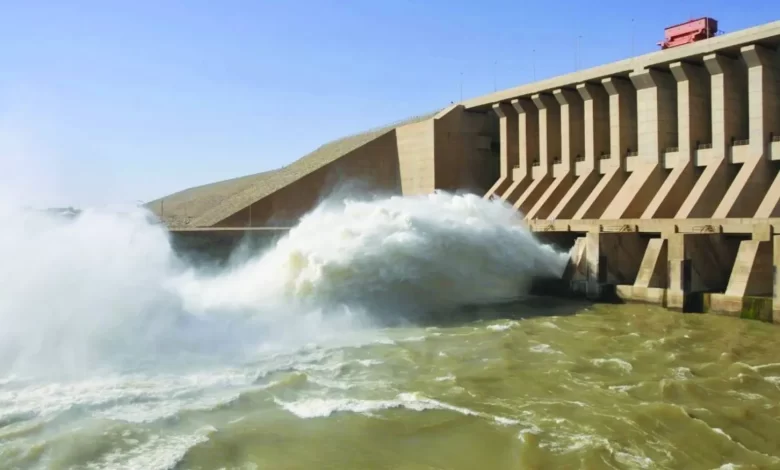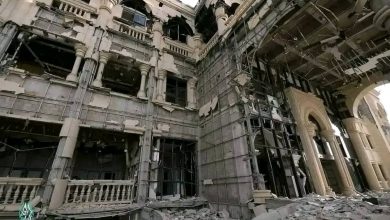Can Sudan’s Merowe Dam Withstand Drone Strikes?

Sudan Events – Agencies
The Merowe Dam, one of Sudan’s largest hydroelectric projects, faces significant threats due to repeated drone strikes by the Rapid Support Forces (RSF) targeting its infrastructure—particularly its electricity systems and gates. Although experts rule out a full collapse of the dam from these attacks, they have warned about the potential for cracks in the concrete structure, in addition to long-standing concerns about the region’s topographical fragility.
The dam is located in Northern State near the city of Merowe, about 350 kilometers north of Khartoum. It stretches 9 kilometers in length and stands 6 meters high. Behind it lies an enormous reservoir containing 12.5 billion cubic meters of water. Its primary function is to generate 1,250 megawatts of electricity, supplying around 10 million people.
In a significant escalation in the Sudanese conflict, the RSF has carried out multiple drone attacks on the dam, causing considerable damage, especially to the power transformers that supply northern Sudan. This has resulted in widespread power outages, some of which continue to this day.
The RSF has reportedly used various types of drones—both kamikaze and reconnaissance models—equipped with mortar shells and RPGs. However, recent strikes are believed to involve the advanced Chinese-made CH-95 drone, capable of both surveillance and precision attacks.
Speaking to Asharq Al-Awsat, Qatar-based energy and spatial consultant Eng. Abdul Karim Al-Amin explained that the dam’s value lies not just in its concrete structure but in the infrastructure that enables its function, such as power generation units. He stressed that drone attacks do impact these systems.
Al-Amin did not rule out the possibility of cracks and fissures forming over time that could lead to collapse, though he dismissed the likelihood of drones destroying the dam with a single or even a few hits. “The dam’s concrete thickness is 1.2 meters and is covered with what is known in engineering as flexible concrete, designed to absorb impacts like those from drones. The dam’s durability and the amount of concrete used outweigh the small payload of drone munitions, making collapse unlikely. But structural cracks could pose future risks,” he said.
He also mentioned “old fears” that arose during the dam’s construction, concerning early structural cracks. “Some engineering circles believe that flexible concrete is typically used when cracks appear during the construction phase, which might have happened with Merowe Dam,” he added.
Al-Amin pointed to studies during the construction phase that questioned the geological stability of the region, raising concerns about natural changes due to water load pressure on the soil. “Dams generally face risks of tectonic layer shifts or man-made disruptions like war. These factors can lead to concrete cracking,” he noted.
He warned that if the dam’s gates are targeted, the resulting floods could submerge the concrete body of the dam. “If a 10 to 15-meter section of concrete is submerged, the weight and pressure of water could cause it to collapse,” he cautioned.
Al-Amin called for a comprehensive engineering assessment of the dam’s earthen embankments and potential shifts or distortions, to be conducted after the war or during any truce. “Such assessments should be extended to all bridges in Khartoum and major water structures,” he emphasized.
He urged that international consultants be brought in to evaluate the damage, especially considering ongoing doubts about Merowe Dam’s geology and the recent drone strikes. “Also, earthquakes in Ethiopia, Damazin, and Suki, and the impact of the Grand Ethiopian Renaissance Dam (GERD) affect all Sudanese dams and must be studied seriously,” he added.
Al-Amin played down the risk of drone damage to peripheral components that can be replaced but voiced strong concerns over the geology of the region, citing weak geological studies and skepticism from experts, including Russians, about the area’s stability.
According to Al-Masry Al-Youm, Cairo University geology professor Abbas Sharaki described the drone attacks on the dam as a “serious development” and one that “concerns Egypt due to Merowe’s proximity to the High Dam.” He said Cairo is closely monitoring Sudan’s situation for any developments that might negatively affect Egypt.
Meanwhile, Sudan’s official news agency (SUNA) quoted Ahmed Abdullah Dafallah, a former resident engineer at Merowe Dam, as reassuring the public about the dam’s strength, stating it was built using the latest dam design technologies.
Asharq Al-Awsat also asked the AI platform ChatGPT whether drone attacks could cause the dam to collapse. The platform replied: “There is no imminent danger of a total collapse of the Merowe Dam. However, there are technical and strategic concerns raised by the recent drone strikes.” It cited experts saying the dam’s core structure was built on strong engineering foundations, limiting the damage drones or light aerial bombardment could inflict.
However, the platform did not rule out that repeated attacks could increase the risk of future structural damage, possibly leading to partial or complete collapse and loss of water control.
It warned of a potential disaster if the dam collapses, due to the sudden release of 12.5 billion cubic meters of water that would inundate vast areas in northern Sudan along the Nile, potentially reaching Egypt’s southern border near the old town of Halfa, previously submerged by the High Dam.
Experts told Asharq Al-Awsat that the Merowe Dam remains relatively safe but warned of deteriorating mechanical and electrical components due to continued drone strikes and lack of immediate maintenance.
The AI platform outlined a scenario of an unprecedented catastrophe in the event of a total collapse, predicting massive floods that would wipe out towns and villages along the Nile, especially Merowe, Debba, Karima, and Dongola. Thousands could perish with little time for evacuation, especially if the collapse occurs at night without warning.
Sudan’s Ministry of Irrigation and Water Resources had previously denied, in a May statement, social media rumors about technical issues with the dam. The ministry expressed regret that such critical national water security issues were being discussed online, and affirmed the structural safety of the dam’s concrete core, earthen and rock embankments. It stated: “Everything circulating on social media is untrue, and the Merowe Dam is in excellent condition,” while threatening to sue those spreading misinformation.



